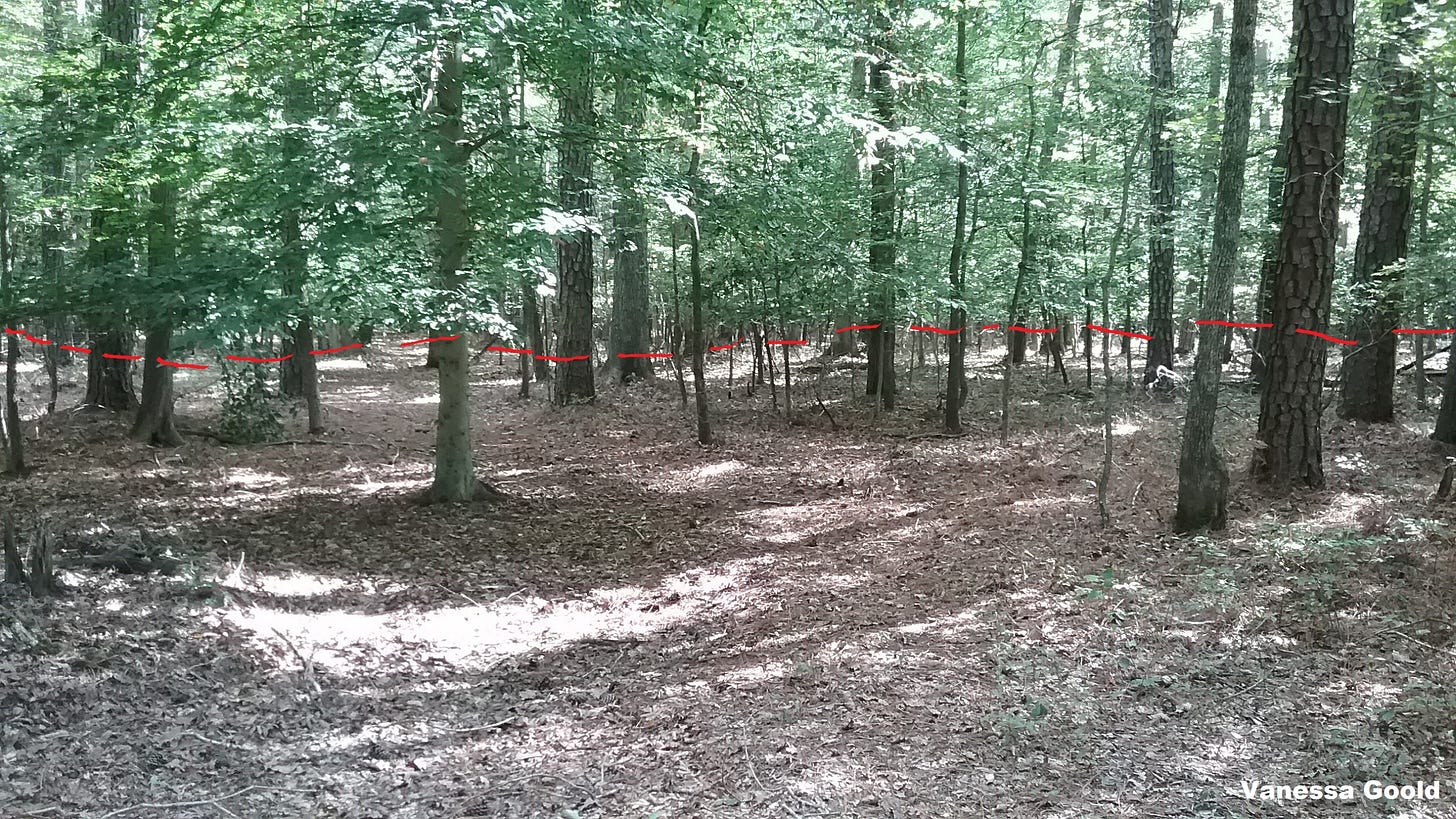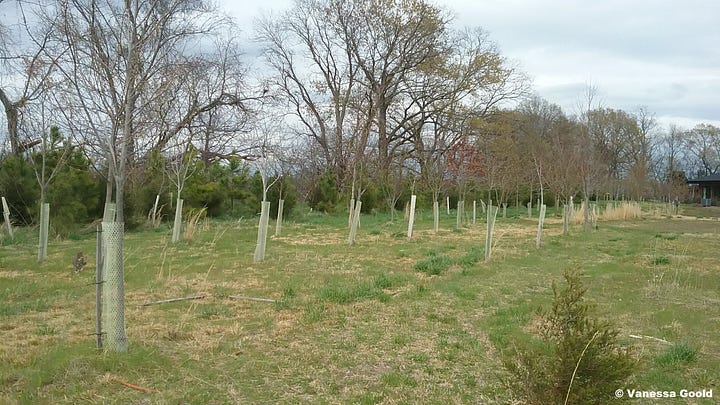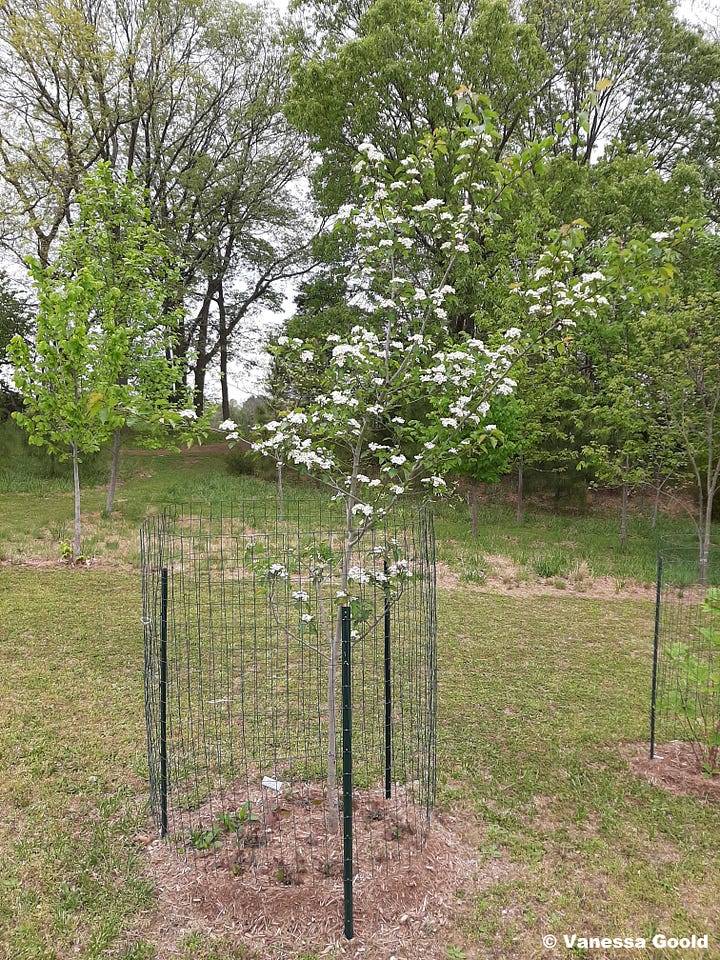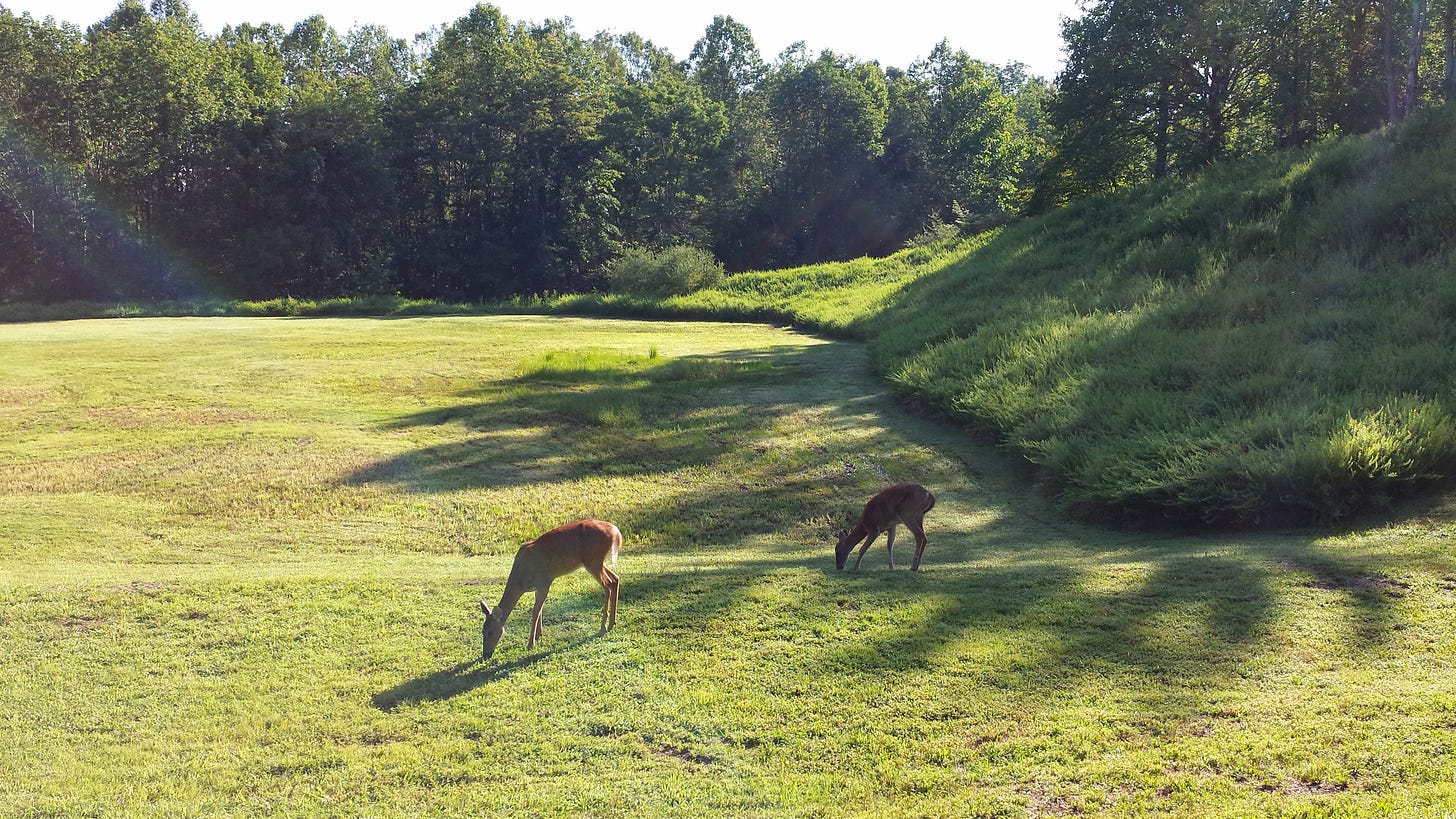In many areas of the US, deer pressure represents a major challenge for gardeners. There is a peculiar type of heartbreak that occurs when you’ve picked out, planted, and tended a plant, only to have deer tiptoe by one evening and demolish it down to a nub.
Ecological Impacts of Deer
Ecologically, the deer population in the United States seems to be out of balance right now. After being nearly extirpated at the turn of the 20th century, white-tailed deer populations rebounded to the point that they have now recovered to estimated pre-European settlement numbers. That’s over 30 million deer trying to make a living in ever more developed, fragmented, and suburban areas that they share with humans.
Meanwhile, natural deer predators, such as wolves and mountain lions have majorly declined, leaving humans as the primary check on deer population control.
During this same period of deer population rebound, American forests have been growing back up as the human population urbanized. We have a lot of second- or third-growth forests where the mature trees are around 100-125 years old.
Whether this is a “too many deer” problem, a “too few predators” problem, or a “too many humans” problem depends on your perspective.
However, the resulting ecological dynamics point toward there being too many deer right now. This is because deer put pressure on forest revegetation and their browsing behavior encourages the spread of invasive plants. Forests cannot naturally regenerate after a disturbance such as a fire, logging, storms, etc. because deer come through and nibble down the newly sprouted tree seedlings. Thus, the age mix in forests gets skewed, and while we may have a certain number of more mature trees too big to succumb to deer pressure, they aren’t reproducing successfully, and when they age out and die, there will be little to grow back in their place.

At the same time, deer have their dietary preferences. They favor native species and within those species, they like some vegetation better than others. General plant diversity suffers, and in particular, as deer make their way through an area eating mostly native plants, this leaves greater space for non-native invasives to proliferate. As the plant diversity declines, so do bird populations and other animal species from insects on up. This 2024 article by National Audubon Society delves into the ecological dynamics in much greater detail.
We also blame deer for other problems, such as agricultural crop damage, car accidents, and the spread of Lyme disease, all of which have significant human health and economic impacts.
Is any of this the deer’s fault? No. Would any of this be a problem if humans weren’t around in such numbers and also modifying the environment so significantly? Also no. Do deer have just as much “right” to live and eat and procreate as humans do? Yes, they do. But the human population shows no sign of reducing itself voluntarily, or giving up large swaths of the landscape to wildlife.
Deer coexistence options at the landscape level
So, we find ourselves with choices to make, because deer will continue to be deer, eating and reproducing up to the carrying capacity of their environment. Rural, agricultural, and suburban landscapes offer plenty for them to eat. Recreational hunting does not currently remove enough deer each year to reduce the population.
At the landscape level, wildlife managers have three main options:
allow and encourage more recreational hunting, especially of female deer;
institute culling programs that employ professional sharpshooters to kill deer; and
sterilization programs that catch, sterilize, and release female deer to prevent them from reproducing.
Each option has its pros and cons as well as costs, and each has more or less political popularity. Furthermore, different natural and inhabited areas are managed by various entities at the local, state, and federal levels that may cooperate or indeed completely disagree about methods, goals, and priorities. Others with greater experience and knowledge have written about this, so I will leave that issue there for now.1
Deer management options at the property level
The upshot of all of this so far is that property owners, and gardeners, have their own decisions to make about how to deal with deer, because the landscape and population scale issues have yet to be resolved.
As an ecological gardener, my goal is to support as much wildlife as possible, in the form of biodiversity of plant and animal species. That in and of itself is not even a clear-cut goal, because I could prioritize plant biodiversity and plant species richness over animal biodiversity. Or I could limit plant species richness in an effort to attract particular animal species that I deem desirable. The point is, we’re always making choices and shifting priorities, whether we even know it or not.
Nonetheless, there is little to be gained by ignoring the pressures that deer bring to bear on our planted spaces. If you want to plant a biodiverse garden in a deer-filled area, it can be a real challenge.
I can think of at least seven strategies for co-existing with deer, and please chime in if you have others to add to this list:
Fencing the entire property or area (needs to be at least 8-10 feet tall to prevent deer from jumping over)
Caging individual plants
Dogs that regularly patrol the space, especially at dawn and dusk when deer are most active
Deer repellent products, which need to be renewed or resprayed regularly after rain
Planting thorny hedges to discourage deer from coming closer in
Strategic clustered plantings, with plants unpalatable to deer surrounding the favored species
Choosing plants that deer don’t favor, i.e., employing a limited plant palette
Some of the strategies listed are obviously more expensive or require more effort than others. Some are more aesthetically appealing than others. None are foolproof, because as the saying goes, “deer don’t read books.” Deer are habitual line-steppers.



Fencing and caging
Completely fencing your property or planting area is a good solution for you, if you can afford it, and if you don’t mind how it looks. It doesn’t solve the deer problem, and might make it worse for your neighbors or the natural areas around you, because the deer will have that much less space for foraging.
On the other hand, it might allow you to plant a much more diverse garden or meadow or grove of trees that goes on to support many more creatures aside from deer, thus providing an immense boost to local biodiversity.
This might all sound very mealy-mouthed, but the point is that when trying to act in an “ecological” manner, we often a) have to make tough choices, b) can’t avoid having winners and losers, c) find that it’s complicated, and d) don’t and can’t ever know everything, so there will always be unintended consequences and learning opportunities.
I’ve done my share of caging and tree tubing. It’s nice to think that these are temporary structures just to protect trees and shrubs while they’re getting established. Beyond a certain point, the hope is that the cage or tube can be removed and the plant will be able to withstand deer browsing. I’ve had mixed success. Deer can be surprisingly persistent (ARE they related to goats??), and they sometimes act in unpredictable ways. And then there are the other ways that they do damage, such as when bucks rub their itchy antlers all over your tender teenage tree saplings, effectively ruining the cambium layer and girdling the tree or severely stunting it. Despite the tree tube, or perhaps just days after you removed it thinking the tree was mature enough. With shrubs, they’ll never get tall enough to grow out of a deer’s reach. So your cage will have to stay in place much longer, and possibly need to be expanded as the shrub gets wider.
Dogs and repellents
If you have a dog or dogs and space to let them go out and defend your territory, that’s wonderful. Let me know in the comments if you have found it to be enough to deter deer damage in your yard. Can they be out there every day at dusk, dawn, and random other times when the deer roam by? And how do you keep them from chasing the deer, another troublesome problem?
I have experimented with various repellents, including sprays and home remedy-type options like Irish Spring soap and human hair. I can’t say they have worked. Some people swear by the repellent sprays, but those have to be reapplied regularly and every time after it rains. I’m just not that on top of things, myself.
Using poky plants
This is an intriguing and appealing option that I have less experience with. I like it because it uses one element of nature to influence another. However, in the case of a thorny hedge, it requires you to have enough space to plant and grow such a hedge so that it won’t also poke YOU or anyone else with its thorns. I wonder if a dead hedge could also be an option here, which is where you stack up a bunch of dead branches, twigs, and brush between vertical supports to create a physical barrier.
Below is an ad hoc example of poky plant protection that I happened to notice a couple of winters ago in a suburban neighborhood, where an oak tree had sprouted inside of a rose bush. I am sure that the rose was planted intentionally and the oak was not, but the end result was that the oak tree sapling had natural protection from deer browse and lawnmower damage, and it got a great start to life as a result.
And finally, deer-resistant plants
Either in combination with some of the protective or repellent strategies discussed above, or on its own, strategically managing your plant palette may be the most effective way to peacefully coexist with deer in your area. This will always be a trial and error endeavor. What works one season may not work the next. But sometimes you also luck out, and a plant you are excited about growing escapes the deer’s notice and lives a great life in your garden.
In general, if you want to choose deer-resistant plants, go for aromatic, milky sap-producing, hairy, or thorny species. Many species in the Lamiaceae, or mint family, escape deer browse. Think of salvia, mountainmint, and monarda. Milkweeds and bluestars produce bitter sap that deer find unpalatable. Hairy and spiny plants such as rattlesnake master and yucca likewise fare well.

Here is a list that may be a good starting place for some deer-resistant native plants in the Eastern United States. Google species and BONAP for nativity in your county.
Herbaceous plants:
Achillea millefolium
Allium cernuum
Amsonia spp.
Asclepias spp.
Baptisia spp.
Chelone glabra
Eryngium yuccifolium
Iris versicolor
Monarda spp.
Packera aurea
Penstemon spp.
Pycnanthemum spp.
Solidago spp.
Symphyotrichum spp.
Verbena hastata
Vernonia spp.
Shrubs:
Callicarpa americana
Ceonothus americanus
Clethra alnifolia
Hammamelis virginiana
Hypericum spp.
Ilex spp.
Kalmia latifolia
Lindera benzoin
Myrica cerifera
Trees:
Asimina triloba
Carpinus caroliniana
Fagus grandifolia
Ilex americana
Juniperus virgininana
Pinus spp.
Taxodium distichum
Also use grasses, sedges, and ferns - most are deer-resistant!
Carex spp.
Deschampsia cespitosa
Elymus spp.
Schizachyrium scoparium
Sporobolus heterolepis
Dryopteris marginalis
Matteuccia struthiopteris
Onoclea sensibilis
Osmunda cinnamomea
Polystichum acrostichoides
You can refer to the spreadsheet above as well, which lists common and botanical names as well as many other attributes besides deer resistance. Please note that all ratings are subject to specific site conditions, microclimates, and other particular factors, such as the personal tastes and brazenness of your area deer!
I’d love to hear your experience in dealing with deer - what has worked best for you? Please leave a comment below to share your experience!
Just one example: Methods for Managing Deer in Populated Areas, by Association of Fish and Wildlife Agencies, 2018.





Hope you get a lot of helpful replies....there is a herd of half a dozen at least that saunter through the yard here... A complex problem without a doubt....